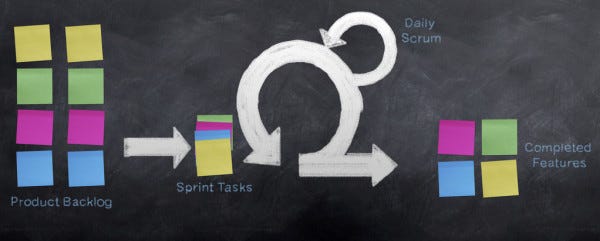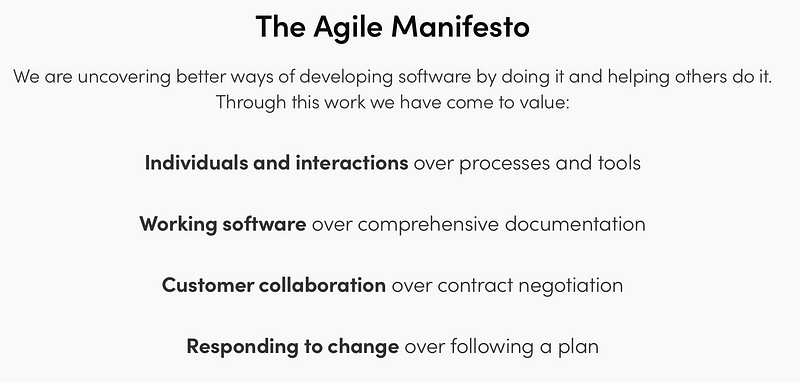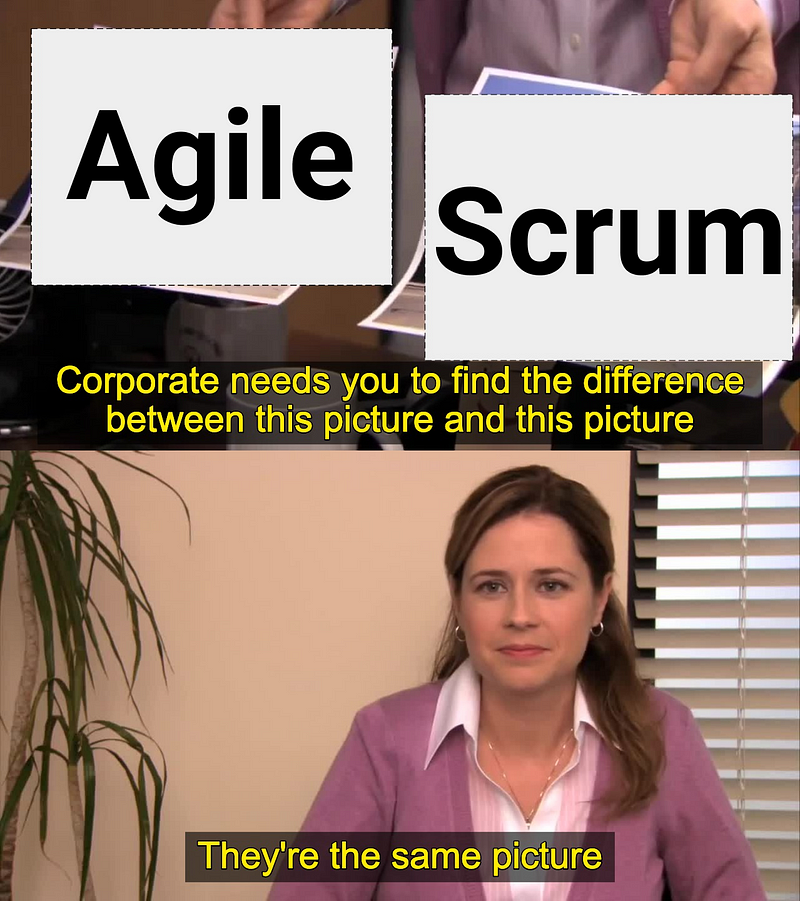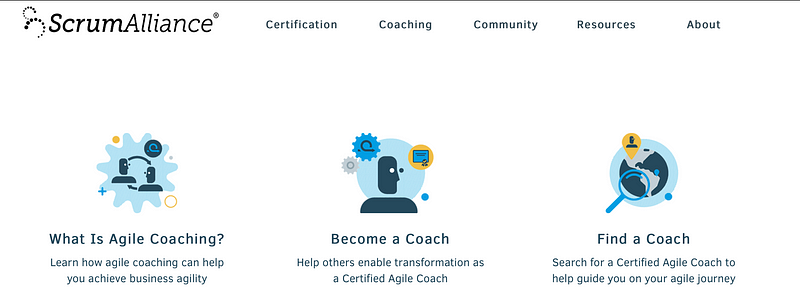Scrum and Agile are one in the same, and it’s killing us

If you’ve worked in software development for any amount of time you’ve definitely heard the words “Scrum” and “Agile” before. In today’s day and age, it is almost impossible to avoid these two project management practices. But are they really different? Can you have one without the other? In theory yes, however in practice that’s just not the case. Let’s explore what each of these things started out as, what they are, and how they turned out today.
The History of Agile
Throughout the 90s software development was ruled by Waterfall. I won’t get into what Waterfall is too much but developers were becoming unhappy with the way things were being done. Several teams throughout the 90s started to think about different ways to produce and deliver software that they felt worked better. Then in the Spring of 2000, a group of developers got together to work out how to change the game. They wanted to shorten the time for deliverables and work more closely with their customers. During that meeting, they didn’t fully get their ideas into anything concrete. However, a little later they met once again to further expand their ideas. Out of that meeting came the Agile manifesto.

This sets out a loose guideline for general ideas that they thought would help software developers work more efficiently and produce better products. These give no specific actions and do not tell you how to accomplish these things. By themselves, these are great principles to espouse. If it stayed simple and kept true to these principles I wouldn’t be writing this article. Agile then went further.
Later on, 12 principles came out of the original 4. These 12 principles were more concrete with a little more direction.

Again, I have no issues with these in and of themselves. The Agile manifesto and the 12 principles still don’t give any edicts on how things must be done, they just give you goals to work towards in your project management. These still allow you the freedom to decide how, logistically, you should go about living up to these things. Once again, if it stopped here, I wouldn’t have any issues and I wouldn’t be writing this article.
Enter Scrum

Scrum actually has a very interesting history that actually predates Agile. Scrum is first mentioned in a 1986 paper called called “New New Product Development Game” written by two Japanese business people. The goal was to introduce a new way for businesses to produce products quicker and with more flexibility. It was meant to be used in the manufacturing industry when it was first brought up in that 1986 paper. In the 90s two developers, Jeff Sutherland and Ken Schwaber first started using Scrum in software development. These two developers would go on to be founding members of the Agile Alliance. This is how Scrum became the main driver of how Agile should be done.
As we can see, Scrum and Agile have been closely intertwined from the very inception of the idea of Agile Software Development. In my opinion, one of the things I love about the Agile Manifesto is also its downfall. It didn’t give anything too specific as far as implementation of these principles which left a sort of power vacuum. This was quickly filled by Scrum, which is still the most popular implementation of Agile.
Merging Agile and Scrum

I’ll state again, Agile and Scrum are only ever theoretically different. In practice, which is what I’m concerned with, they are one and the same. If you hire an Agile coach you will be sold Scrum as well. If you look at the Scrum Alliance website under the coaching tab they don’t even separate the ideas themselves.

The Scrum Alliance website promotes Agile coaching. According to their own website, it seems you cannot have Scrum without Agile. They certainly don’t go out of their way to promote another way to use Scrum unless it’s in an “Agile” environment.
Where is the issue?
If you’re an Agile person and even if you agree with me you may be wondering “ok, so they’re the same thing now. What’s the big deal?”. Scrum, in its modern form, is largely inefficient and often times tries to be a one size fits all solution. Agile was originally intended to be its own standalone idea and something that can adapt easily to many varying situations. However, as time went on that great flexibility has been taken away by the introduction of and strict adherence to the Scrum methodology.
Let’s have a look at what Scrum looks like in today’s day and age. Today Scrum is made up of a large number of meetings, here are just a few:
- Daily Scrum meeting (aka standup)
- Backlog refinement meeting
- Cross-team refinement meetings
- Retro meetings
- Scrum of scrum meetings
In today’s Agile training it seems that a strong democratic process is important for these meetings. This means that in these meetings that there should be a large number of attendees. I’ve been in meetings to discuss technical issues and tech debt between developers. These were meant to be technical meetings to discuss technical details between tech leads. Yet Agile people think it important that project owners, agile coaches, and business people be present in these meetings as well. It’s a waste of their time because it’s not a discussion meant for them, and it’s a waste of our time because we spend a lot of it explaining and re-explaining various intricate technical details. No one other than the tech leads should be concerned with these kinds of technical details. If there is a technical issue the product owners should be concerned with can we identify the issue and when can we have it fixed. They don’t need to know about the code we’re about to write.
Another big issue is that the Scrum side of things is antithetical to the Agile manifesto. Individuals and interactions over processes and tools. I can’t tell you how many times I’ve been told to just “stick to the Scrum process” or that it can’t be altered because that’s the way Agile is done. This is not a unique experience, this is the majority of the experiences with Agile coaches and that’s an important point. You may be thinking to yourself “But my company hired an Agile coach and it’s working out great for us.” If that is true, that’s fantastic but understand you’re in the minority.
How come it keeps coming back?
Another thought that may have popped into your head is, “If Agile and Scrum are so bad, why are they the only game in town?” That’s a good question, and there is a most unfortunate answer.

Yup, that’s right Agile does big business. The Agile people used all the right buzz words that the manager absolutely love. They sold business faster product development, better quality, increased throughput, etc. If you don’t already know, management responds to buzz words like a moth to a flame. They love it and the Agile people say all the right buzz words. So now they need to profit as much as possible because they have a completely captive audience. How do they do it? Churn out as many Agile coaches as possible.
Just to become an Agile coach it can cost anywhere from $500 — $1000 per person. Let’s look at the Scrum Alliance website to see how much it costs to start. First, they want a $250 non-refundable “admin fee” and then you have to wait a few days to receive your APPLICATION. That’s right, you still have to apply after forking over $250. It doesn’t even tell you how much you’ll be paying for the class itself, which is shady on the face of it. But wait, there’s more. If you scroll down you’ll notice that you’ll also have to pay $750 PER YEAR to keep your license. That’s literally $1000 we can account for right on the face of it. If you’re thinking that the price is a little steep for regular people to just be forking over all that cash you’re not wrong, but a lot of the time it’s not paid for by individuals. The other way they rake in cash is by getting companies to pay for their internal employees to take these classes and the companies pay for the fees and all that. Why would companies do this? Remember the buzz words, the business people love them and the Agile people use them. Let’s be honest, this is a lot of money and effort to teach people how to waste as much time as humanly possible.
Here we are
We have arrived at the conclusion folks. If you couldn’t tell, Agile frustrates me to no end. I have yet to see an implementation of Agile with Scrum that actually makes things better. I’ve worked in a number of different industries and for quite a few different companies and every Agile implementation is not only full of all the exact same holes but makes my life harder. I’ve talked to a lot of people why have had the exact same experiences. While this is anecdotal, it points to a larger issue. We are seeing the same issues across industries and companies, literally the exact same issues. As it stands right now, with how many coaches are being churned out and how much money the Agile industry is making I don’t see it getting any better, only worse.
If you’ve enjoyed this article I’d love for you to join my mailing list where I send out additional tips & tricks!
If you found this article helpful, interesting, or entertaining buy me a coffee to help me continue to put out content!
